“Nero is known as one of Rome’s most infamous rulers, notorious for his cruelty, debauchery and madness.
The last male descendant of the emperor Augustus, Nero succeeded to the throne in AD 54 aged just 16 and died a violent death at 30. His turbulent rule saw momentous events including the Great Fire of Rome, Boudicca’s rebellion in Britain, the execution of his own mother and first wife, grand projects and extravagant excesses.
Drawing on the latest research, this major exhibition questions the traditional narrative of the ruthless tyrant and eccentric performer, revealing a different Nero, a populist leader at a time of great change in Roman society.
Through some 200 spectacular objects, from the imperial palace in Rome to the streets of Pompeii, follow the young emperor’s rise and fall and make up your own mind about Nero. Was he a young, inexperienced ruler trying his best in a divided society, or the merciless, matricidal megalomaniac history has painted him to be?”
(From the British Museum website: https://www.britishmuseum.org/exhibitions/nero-man-behind-myth)
Well, the BM does exhibitions well; I think that’s well-known, but this one drew in exhibits from several museums across the world including Pompeii/Naples and explained the man in his age, one full of political intrigue and jostling for power (as most Roman periods were!).
Emperors and groups of powerful people with vested interests (senators, army commanders, senior palace bureaucrats) tend to ‘damn the memory’ of the previous ruler so traditional accounts of Nero had followed the writings of those beholden to those vested interests.
This exhibition questioned all that and drew deep on the sources to reassess Nero and his actions in context. It wasn’t a whitewash, just a re-examination. Many visitors may not have been aware of the strong influence of Agrippina, Nero’s mother, on the very young emperor, or of the fact that Nero wasn’t in Rome at the time of the Great Fire in 64 CE*. As well as referencing great events such as the Boudiccan Revolt, war with the Parthians, the Great Fire, exhibits included scenes from Roman life as they applied to Nero’s time and reflecting his interests – building and arts, especially the theatre.
Although a great deal was familiar to me, I enjoyed the whole thing and was surprised that two hours had gone by when I left. The exhibition ends on October: I urge you to take the time to and go and see it.
A few photos…
- Young Nero
- Agrippina, Nero’s mother
- Agrippina ‘crowning’ Nero
- Praetorians – up close
- Lead ingots, Mendips, Roman Britain. Top one showing Nero’s name
- Bronze head of Nero found in a river near Colchester at the time of the Boudicccan revolt
There was so much more, including information about Nero as military commander, builder, artist and I was so absorbed that I forgot to take photos at some stages! Go and see it and/or order the highlights booklet or complete catalogue from the British Museum.
*(CE = Common Era, BCE = Before Common Era. These are now used instead of AD and BC)
Alison Morton is the author of Roma Nova thrillers – INCEPTIO, CARINA (novella), PERFIDITAS, SUCCESSIO, AURELIA, NEXUS (novella), INSURRECTIO and RETALIO, and ROMA NOVA EXTRA, a collection of short stories. Audiobooks are available for four of the series. Double Identity, a contemporary conspiracy, starts a new series of thrillers.
Download ‘Welcome to Alison Morton’s Thriller Worlds’, a FREE eBook, as a thank you gift when you sign up to Alison’s monthly email newsletter. You’ll also be among the first to know about news and book progress before everybody else, and take part in giveaways.





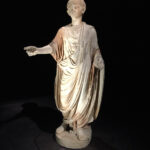
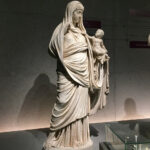
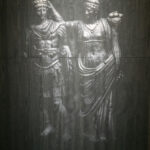
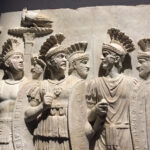
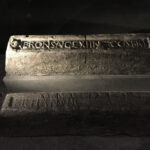
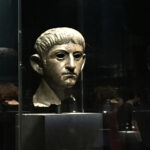









I would love to see the exhibition. How lucky you are. Thank you for sharing.
I was very fortunate that the exhibition was running at the time of my visit to the UK! It was very well presented and equally thought provoking.